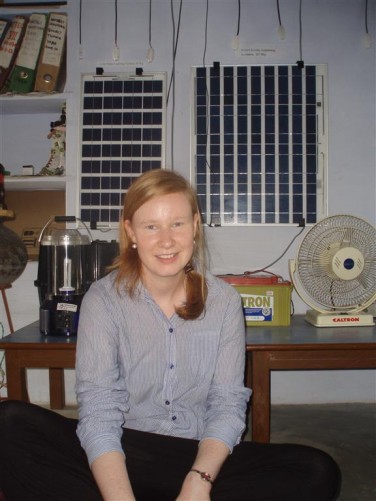The research Fleur Rooker, a student at the Free University of Amsterdam, to the application of solar technology for rural women in India has shown that opportunities are there. Looking at India’s favourable climate for solar technology, Fleur proposes two solutions: a Solar PV lantern and a Solar Home System.
Fleur has done research in various households in rural India. Among others, at weavers working for Women on Wings client Jaipur Rugs. Electricity enhances the quality of life of the rural households. This would require a simple and durable solution that does not require high investments. The main results show that there is an average of 85W capacity present in the households surveyed, while a double capacity is required to satisfy the households’ needs.
The main criteria according to the surveyed weavers, are a continuous stream and access to electricity with the right light quality that offers them flexibility and makes them independent. So these women can use their time more flexibly, combining their work with other (domestic) tasks. With adequate lighting in the house, they would be able to work longer and faster with a production increase of 12.5%, and make fewer errors. With this production improvement, women could earn up to 750 rupees (9 euro) extra income per month. That is ± 15% more than their current average income. Finally, electricity at night would offer the ability to spend more time with the family, create a better view of preparing the meal, and children can study longer. More and better electricity would clearly add value in rural households in India.
The conclusion of the study shows a short and a long- term solution for the women. The Solar Photovoltaic (SPV) lantern is a short -term solution with a payback period of 4.5 months. Here the lamp acts as a production tool that provides light at one place at a time, so that the women can weave longer. With this SPV lantern, the household can save 150 rupees (1.80 euro, ± 2.5% of the household budget) per month on traditional fuel costs like wood, dung and kerosene. Next to this, there is the Solar Home System with a payback period of 16.7 months, and a monthly savings of 450 rupees (5.40 euro, ± 7.5% of the household budget). These longer -term solution not only provides relief in one place at a time, but increases the overall quality of life as it benefits the entire household.


